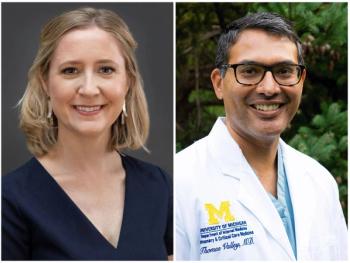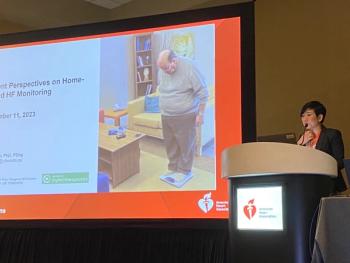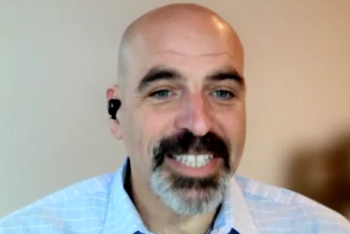
United States faces physician shortage
Solutions lie in med schools, mid-levels and incentives
BY 2020, THE UNITED STATES will face a shortage of about 90,000 physicians, according to the Association of American Medical Colleges (AAMC). Industry experts say there are three causes behind the shortage, with additional shortfalls expected as a result of reform.
Population growth, longer lifespans and the aging of America call for higher demand for medical professionals. Over the next decade, the Census Bureau projects a 36% growth in the number of Americans over age 65.
The Patient Protection and Affordable Care Act (PPACA) will expand coverage to more than 30 million Americans in the next decade. An additional 8,000 primary care physicians (PCPs) will be needed in 2025 to treat patients obtaining coverage under PPACA, according to a study published in the Annals of Family Medicine (November/December 2012). The data also showed that primary care visits could rise to 565 million by 2025.
“That’s enormous,” says David Bronson, MD, president of the American College of Physicians and president of the Cleveland Clinic Regional Hospitals. “A lot is being done, but more is needed.”
The Department of Health and Human Services estimates the national physician supply will increase by only 7% in the next 10 years. In some specialties, the overall supply will decrease as more clinicians retire.
Although the number of PCPs has doubled in the last three decades, and continues to grow, physicians won’t be able to handle the projected population influxes and increased demands.
PCPs currently make up only 32% of the nation’s provider workforce. The Council on Graduate Medical Education (COGME) has recommended the percentage should be at least 40% to 50%. The percentage of medical students choosing primary care is also declining. Although more than half of students indicate an interest in primary care when starting out, only 20% stick with primary care by year three of medical school. Even fewer end up working in primary care, according to COGME.
“We’re not getting the value that we’re paying into medical school right now to be able to produce an adequate primary care workforce,” says newly installed American Association of Family Physician (AAFP) president Jeffrey Cain, MD.
The majority of students who study internal or general medicine often go on to pursue higher-paying specialties after residency completion. Most blame a significant income gap. Dr. Cain also says there’s often an unspoken attitude in medical school that primary care is not “prestigious.”
“It hasn’t always been considered one of the most glamorous fields to go into for medicine,” says Randy Howard, MD, vice president and senior medical director of care management for WellPoint. “Plus, the ability to generate income from your practice is a key consideration when graduating from medical school and choosing what specialty to go into. Debt associated with obtaining a medical school education is increasing and can be upwards of $200,000 by the time you finish.”
1 EXPANSION OF MEDICAL SCHOOLS
According to Dr. Bronson, in 2006, the AAMC pushed to expand medical school classes by 30% by 2015.
“We’re probably at a 20% to 25% range of expansion so far,” says Dr. Bronson.
With the number of schools increasing, the AAMC reports that there will be an additional 7,000 medical school graduates every year over the next decade. Experts say graduate medical education (GME) must be expanded upon now in order to keep pace with the growing number of graduates. Without GME expansion, medical school increases won’t amount to much.
“This is where the challenge lies,” Dr. Bronson says. “Without expanding the number of graduate medical positions, there will be a bottleneck and quite a bit of strain on the system,” he says.
Competition for GME residency positions is already high. American Medical News reported that in 2012, a total of 38,377 medical school graduates applied for 26,722 U.S. residency positions. Of those, only 22,934 applicants from U.S. medical schools were assigned positions.
“In graduate medical education, we are currently losing primary care slots,” says Dr. Cain. “We have fewer residency programs in primary care than we did a decade ago.”
Currently, all GME funding comes either from Medicare or from hospitals, but does not include community training. Medicare funding for GME has also remained stagnant since the Balanced Budget Act of 1997. Many medical professionals are calling on health insurers and policy makers to help out.
“Insurers have a huge voice in what happens in Washington, D.C., and what happens in the states,” says Dr. Cain. “We would like to encourage insurers to help make medical schools more capable of what the public needs socially. Graduate medical education benefits all of us, and insurers should be part of the solution by funding it nationally.”
2 REIMBURSING MID-LEVELS
According to Doctor’s Digest, mid-level services are often covered by public and private third-party payers, but reimbursement rates can vary. The value of adding mid-level practitioners correlates to the increase in new models of reimbursement such as Accountable Care Organizations (ACOs).
“The medical profession along with nursing and physician assistants have been really pushing the expansion of mid-levels in treatment, because they can provide tremendous, valuable service when they’re part of the healthcare team,” says Dr. Bronson. “Now will it be sufficient? I doubt it, because there’s going to be shortages in many specialties as well. It’s going to be challenging.”
3 NETWORK INCENTIVES
WellPoint has developed a new portfolio for its network of 100,000 PCPs, offering them more payment and fewer hassles. The primary care program, which began this month, aims to reinforce the physicians with financial and operational support.
“Our initiative is focused on PCPs and their ability to provide the access and effectiveness that we need to improve the quality of care for our members,” says Dr. Howard.
The initiative has financial and professional components. The financial component will increase baseline compensation for traditional and non-visit services, such as creating follow-up care plans. Shared savings will also increase earning potential. The professional component involves providing tools that allow physicians access to data and decision support.
“Physicians will receive reports about the members they’re taking care of so that they can see gaps in care, provide more effective care and engage in case management services,” Dr. Howard says. “If it’s a smaller practice, it may not have the resources independently to provide case management.”
The plan’s impact on the primary care shortage is an indirect one, Dr. Howard says. Valued support services and financial incentives tend to draw more professionals toward certain specialties.
UNDERSERVED AREAS
According to the Robert Wood Johnson Foundation, 55 million Americans already live in areas with shortages of PCPs. About 11% of PCPs practice in rural areas, so the physician-per-person rate is much lower than in urban areas. Medicare has long offered 10% bonus payments to physicians in primary medical care Health Professional Shortage Areas (HPSAs), but the bonus hasn’t created significant impact.
“There’s definitely a maldistribution in terms of geography,” says Dr. Bronson. “It’s harder to get people to practice in traditionally underserved areas because the economics of the practice are often challenging.”
Although there are several possible solutions to mitigate the physician shortage, most will take time to gain traction. There are no instant fixes.
Dr. Cain says insurers and policymakers should step back and ask themselves whether government funding is producing a viable workforce. Healthcare systems with a solid primary-care backbone are more cost-effective for all involved.
“Insurers want higher quality and lower cost. The best way to achieve that is with an adequate primary-care workforce,” he says. “We have to work together as providers, employers and payers because we’re stronger when we go about this as a system.” MHE
Newsletter
Get the latest industry news, event updates, and more from Managed healthcare Executive.




